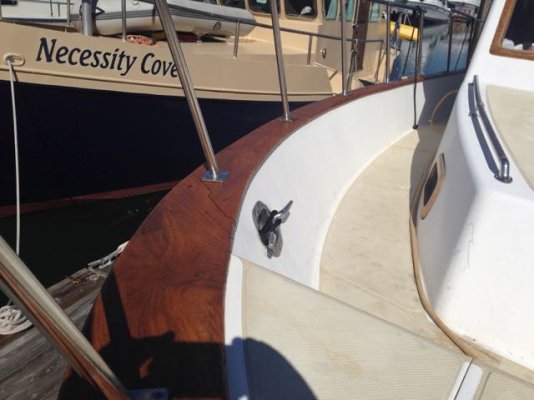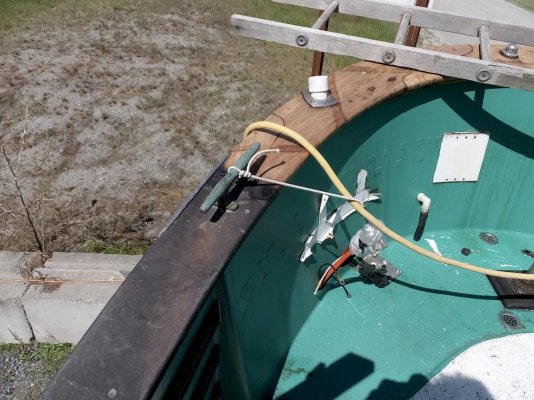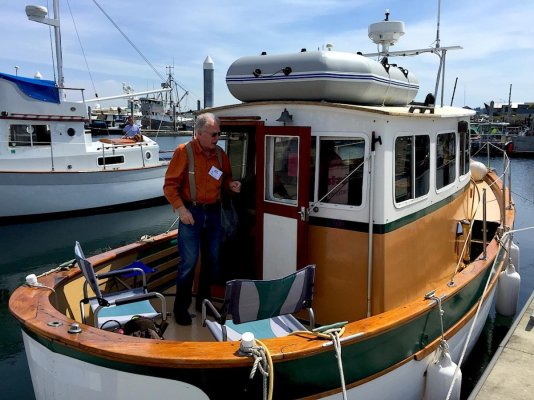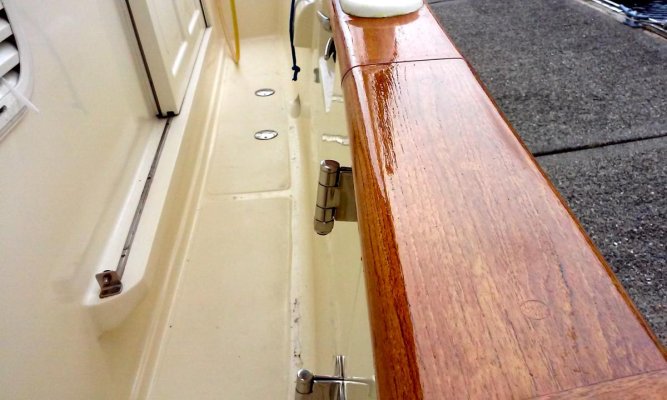Cheechako
Veteran Member
- Joined
- Jul 6, 2012
- Messages
- 76
- Location
- USA
- Vessel Name
- Synergy
- Vessel Make
- Hershine TriCabin Trawler
In 2012, I began my boating life by purchasing a Hershine TriCabin Trawler (made in 1985 by Cheerman yards, Taiwan). The teak top rails were blackened, so I researched a strategy to brighten the wood. After much conversation with others at the marina, and some examples to look at, I started with the starboard rail and...
The initial results were glorious, restoring the golden color like new. (Due to change in weather, I could not get the third recommended coat on before winter).


But....after 1 year in the Pacific NW sun and rain, the initial luster is gone and now there are discolored spots breaking through. The color of these spots reminds me of the sun exposed, oxidized discolored teak that I scrubbed clean in the first place. My first thought was that I failed to get an adequate coating of Cetol and the wood is now showing oxidation again. However, I have also read on this Forum that these stains could be fungal growth underneath the Cetol and lead to rot.


Regardless, the result is disappointing in that it did not last 1 season, and now I am concerned about leaving the Cetol on.
Or was the original application too thin and should I re-treat these areas with brightener and then re-apply Cetol?
What do the experienced boaters on this Forum think of these stains, and how should I handle them?
Many thanks in advance
- Pressure washed the blackened coating off
- Scrubbed with teak cleaner
- Scrubbed with teak brightener
- Dry overnight
- Cetol, two coats in two days.
The initial results were glorious, restoring the golden color like new. (Due to change in weather, I could not get the third recommended coat on before winter).


But....after 1 year in the Pacific NW sun and rain, the initial luster is gone and now there are discolored spots breaking through. The color of these spots reminds me of the sun exposed, oxidized discolored teak that I scrubbed clean in the first place. My first thought was that I failed to get an adequate coating of Cetol and the wood is now showing oxidation again. However, I have also read on this Forum that these stains could be fungal growth underneath the Cetol and lead to rot.


Regardless, the result is disappointing in that it did not last 1 season, and now I am concerned about leaving the Cetol on.
Or was the original application too thin and should I re-treat these areas with brightener and then re-apply Cetol?
What do the experienced boaters on this Forum think of these stains, and how should I handle them?
Many thanks in advance
Last edited:









